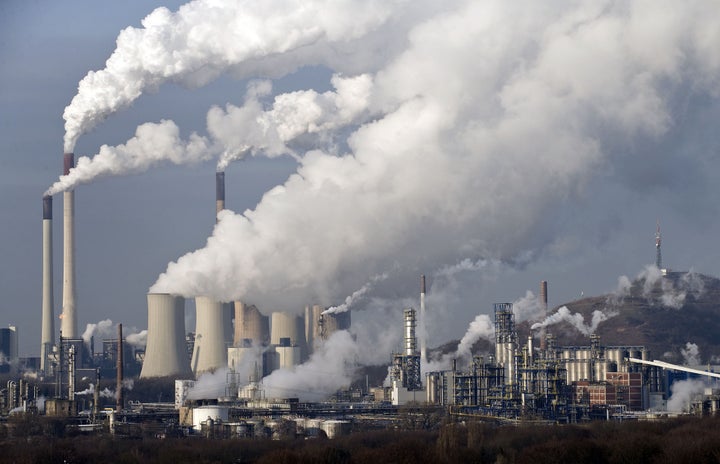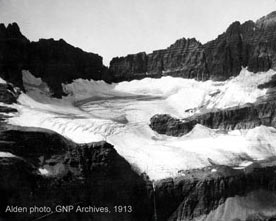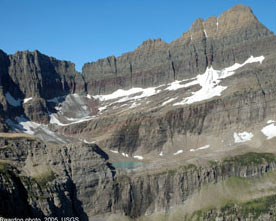
We had an amazing trip this summer doing research for a new book. Along with visiting sustainability activists of all types, we had the opportunity to stay a few days in Glacier National Park, one of the most beautiful places in the world. We even got to see a mountain goat! Very exciting.

1913 photograph by W. C. Alden (Glacier National Park Archives)
One thing we didn't see a lot of were glaciers. And you don't get a prize for guessing why we didn't! The fact is, they're melting, and not just a little bit, but like, all-the-way-gone gone. From 150 glaciers when they were first recorded in 1850 to just 25 today. That's right, over 80% melted. The last 25 are expected to have vanished from glacier-dom in ten years. Kaput. Over. No more glaciers in Glacier National Park within a decade. Take a look at the above photo taken in 1913 of Shepard Glacier, and compare it to the same place in 2005.

2005 photograph by Blase Reardon (USGS)
One thing they might want to consider is renaming it Rocky Mountain National Park, because we went to the park that currently bears that name in Colorado, and it's in mega trouble. Because of decades of drought and extreme heat, a variety of nefarious beetles have infested much of the ponderosa pines and other evergreens that used to make this one of the most beautiful places in America. In parts of the park 90% or more of the trees are dead, and entire ecosystems are in a lamentable death rattle. If someone had told us that a nuclear bomb had recently been dropped on this park, we would have believed them.
On some level, visiting these parks felt like saying farewell forever. If we are ever able to make it out to these wonderful places again, they will surely be even more severely compromised by our insidious addiction to fossil fuels. Living in America today has all the hallmarks of being married to an abusive alcoholic. We continue to destroy everything we love, even though the answer is so painfully obvious. Going straight today means utilizing renewable energy, incorporating permaculture principles like edible landscaping and eating local, and making difficult but ultimately fruitful and rewarding decisions like giving up one of the family cars and taking more mass transit and bicycling. Figuring out the path forward is not difficult, its finding the will to accomplish these things that is the challenge. The awesome thing is that embracing a sustainable life is a reinforcing positive cycle. Taking a few steps forward, like planting a fruit tree or hanging up your clothes to dry, brings cumulative rewards that illuminate the reasonable-ness and effectiveness of empowering yourself to break the fossil fuel habit. Positive energy breeds positive energy, in a positive feed back loop.
And we're going to need a couple of positive feed back loops that combat Global Climate Disruption, because we've created a few feedback loops that are making the situation just a trifle more dangerous than it already was (as if we needed that!). A big one on that score is the death spiral of the Arctic sea ice. The Arctic feels the brunt of global warming, and the temperature there is rising rapidly, leading to permafrost melting in Siberia, Alaska, and Canada. This is starting the release of massive amounts of methane, a very potent greenhouse gas. An educated guess is that to stop the runaway release of stored methane in the permafrost, we need to reach a peak in fossil fuel burning by 2015, and start a 3% reduction each year afterwards. With an oil peak either behind us or very near (as even conservative stalwarts like Forbes magazine are acknowledging), this primarily means we need to start phasing out coal as a primary source for electricity as soon as possible. Fortunately, there's many ways to make this happen! All we need to do is make it a priority.
Read more about the Hrens at www.thecarbonfreehome.com